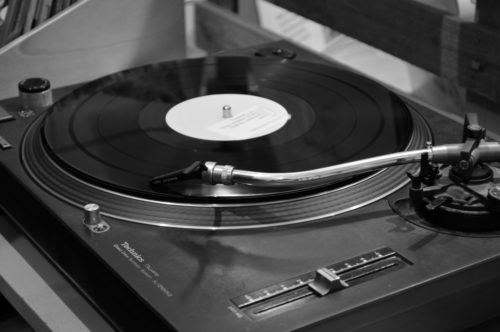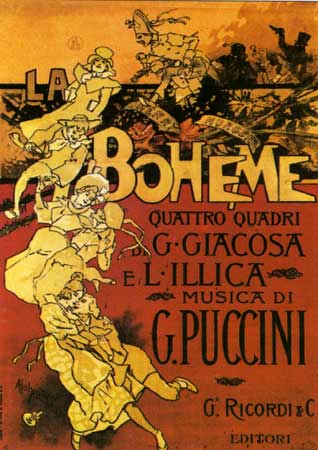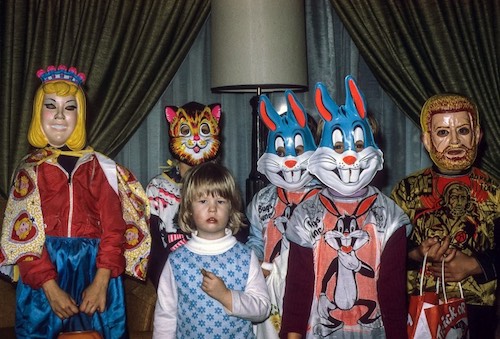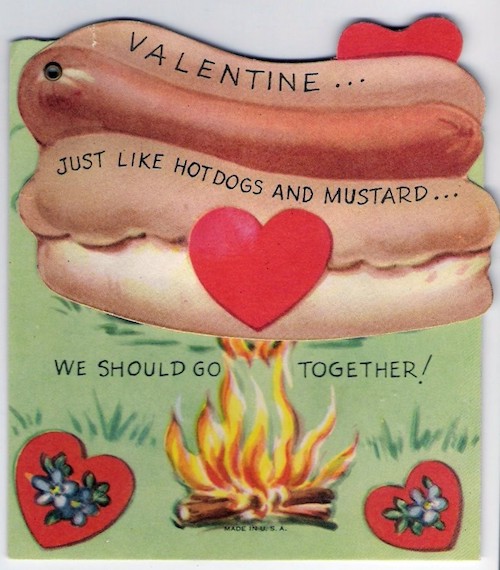North Country Girl: Chapter 10 — The Return of Miss Ritchie
For more about Gay Haubner’s life in the North Country, read the other chapters in her serialized memoir. The Post will publish a new segment each week.
The August before fourth grade, when we returned from a back-to-school Minneapolis shopping trip, there was the letter from Congdon with my class assignments. “You have Miss Ritchie again for fourth grade,” reported my mother.
A miracle! In the age-old tradition of Congdon Elementary, teachers picked a grade and stuck with it. They taught the same grade in the same classroom until they retired or dropped in the harness. But I had a second year with Miss Ritchie, another year of being singled out for my excellent work and good behavior, of having my book reports and stories read aloud, my clumsy shoebox dioramas given pride of place.
Perhaps Miss Ritchie, with her seniority, had been allowed to cherry pick among the students. All the smartest kids were in her fourth grade class, and none of the unruly boys.
But the post-Sputnik changes in education finally began to creep into our 1930’s style schooling, into those sickly green painted plaster and chalk boarded school walls.
Early in the school year, we were escorted one by one into the library, where a serious young woman administered IQ tests. I was thoroughly enjoying myself until we got to the section on spatial thinking. These questions had no words or numbers; they were a series of connected squares. The multiple choice answers were four shapes: pick the one the squares would make when put together. I got the first one, which was a plain six-sided cube, after that it was pure guesswork. It felt like there were hundreds of these stupid problems, pages and pages of squares becoming more and more complicated with ever more terrifying, hundred-sided completed shapes to choose from. I was sure that this stone-faced lady thought I was an idiot.

Our fourth grade classroom boasted the latest in educational technology: a brand new SRA Reading Lab and a box of color-coded “cards” (actually four-page booklets). As the smarty-pants class, we all started a few shades up from the bottom, assigned a color based on our Iowa Reading Test scores from the year before. During “reading” or whenever I had free time, I selected a card from my assigned color. I read the little story, or more often, fairly boring non-fiction article, and then answered questions about it. This measured my reading comprehension at each level. I tore through those booklets, heading for the twinkling silver category at the top. To my disappointment when I got there, the silver cards contained the dullest readings of all. I recall slogging through a biography of Roger Bannister, the man who broke the four-minute mile, and only slightly more interesting, an article about how the movies used subliminal advertising to get people to eat more popcorn.
Math was still done out of battered textbooks, long division and decimals solved on the blackboard and on smudged blue mimeographed worksheets. Social studies and science were also taught directly from the textbooks. Miss Ritchie was still not overly fond of either subject.
Our student teacher that year specialized in music appreciation. She took us through each section of the orchestra — strings, reeds, brass, and percussion — instrument by instrument. She had it easy; most of her lessons were playing records that featured different musical instruments and trying to get us to identify them. This request was met by shrugs from the male half of the classroom, who were disappointed that the lights remained on, unlike last year’s art studies, when they could misbehave in the dark until the looming shadow of Miss Ritchie rose from her desk to end their hijinks. For her final class, the student teacher finally got around to playing real music; she played “Peter and the Wolf” and “Sorcerer’s Apprentice” for us on Congdon’s crappy, tinny record player, urging us to name the instruments in our head while we listened.

In my ongoing role as biggest geek in Congdon, I was enthralled and decided I loved classical music. The soundtrack at home was non-stop Broadway show tunes; my father was a frustrated Robert Goulet. My sister and I marched around the house singing, “The Rain in Spain” and “Seventy-Six Trombones.” I had watched Music Man and Bye-Bye Birdie on TV, but the plots of the other “Original Cast Albums” I had to figure out from the one-paragraph synopsis on the back of the record sleeve. I was stunned when I finally saw My Fair Lady that “I Could Have Danced All Night” wasn’t about Eliza’s night at the ball. One of the few Original Cast albums my father didn’t have was Gypsy, which might have been too racy for his Catholic upbringing. When NBC in a daring move ran Gypsy on Saturday Night at the Movies, my sister and I, faithful weekly viewers unless it was a Western, were spellbound. For weeks after seeing Gypsy, Lani, who weighed about 40 pounds and vanished if she turned sideways, practiced stripping down to her panties in front of our bedroom mirror, while belting out “Let Me Entertain You.” My mother was amused, but I don’t think she ever told our dad about these performances.
***
Around the same time I discovered classical music, my mother’s best friend, Karin Luster, had her brush with fame, Duluth style. In those years, the touring company of the Metropolitan Opera made it all the way up to the high northern latitudes of Duluth to do two performances in the Denfeld High School auditorium. That year it was La Bohème, and the company was in need of a local poodle for Musette. Karin volunteered her chocolate toy poodle, named, of course, Fifi. Karin longed for stardom; she was always the first and the loudest at the piano bar. She was thrilled that Fifi would be appearing on stage with the Metropolitan Opera. Karin, my mom, and I went to the Friday night performance, my first exposure to opera. When Musette swanned on stage in Act I, ready to launch into her song, there was little Fifi towed behind her on a leash, frantically scrabbling away from the stage lights, and finally showing his displeasure at being there by peeing all over the floor. The next night Musette entered sans dog.

My mother was delighted to cater to my highbrow inclinations. “I always wanted a daughter who played the harp,” she sighed. She truly believed that behind the book, behind the glasses, there lurked inside me a germ of talent for something. I took piano lessons from a grey old lady whose house smelled of lavender and cat piss. I hated sitting next to her on the bench, her sticky, wobbly skin touching my arm, the metronome ominously ticking away, and I hated practicing at home even more. I managed to forget to go to enough lessons (which had to be paid for anyway) while showing so little improvement (never advancing beyond the first John Thompson’s Modern Course for the Piano with its bright red cover and charming line illustrations) that I was finally allowed to quit.
I have vague memories of being dragged to dance lessons as a four-year-old in Hawaii with a bribe of shaved ice afterwards, and of quitting in a snit when a twelve-year-old was cast as Cinderella in the big recital, a part I thought belonged naturally to me. My mother did not give up hope that I could be taught to dance. A few years later she found yet another older, overweight spinster who once a week moved all the furniture in her living room aside and gave tap dance lessons. Again, I failed to thrive, having constant doubts about which was my right foot and which my left. The teacher believed that the solution was to stand next to me in the line of tiny dancers in black leotards, grab my upper arm in her iron claw, and shove me back and forth while howling either “Shuf-fle STEP! Shuf-fle STEP!” or “WAY down UP-on the SWAN-ee RIV-er!” I manage to soon escape that hell, although not without considerable bruising.
I was not going to be a talented wunderkind like Pamela Nishus, the pork-faced, noxious, same-age daughter of one of my mother’s friends who went to Holy Rosary, thank goodness, so I heard about her a lot more than I had to actually see her. Pamela sang, Pamela danced, Pamela was always the star of any play or recital, her proud parents beaming in the front row. Didn’t I want to go see Pammy’s show? No. Pammy could go to hell.
Despite my complete lack of talents, thanks to the student teachers who dropped down on us for a few weeks at Congdon, I became an art appreciator. I could identify the artists, name the instruments, recognize the composer. I liked going to museums and concerts; didn’t performers need audiences? (With the exception of Pamela Nishus.)
North Country Girl: Chapter 8 — Teacher’s Pet
For more about Gay Haubner’s life in the North Country, read the other chapters in her serialized memoir. The Post will publish a new segment each week.
My bookworm tendencies paid off at school, where I was the smallest and the youngest, but definitely the smartest, doted on by all my teachers at Congdon and especially by Miss Ritchie.
On the first day of third grade, I walked into the classroom wearing a new red and black plaid dress with puff sleeves and a dainty smocked top. These Polly Flinders dresses were the height of girlhood fashion; my mother hoped that since I couldn’t make friends, maybe my dress could. The old wood and cast iron desks, with their ancient carvings, slamming seats, and finger-pitching tops, desks that had been welded to the floor since the beginning of time, were gone. In their place were rows of modernish, moveable laminate and metal desks and chairs. The new desks were basically lidded drawers; mine quickly became a rat’s nest of crumpled papers, broken pencils, bits of eraser, and somewhere, the pair of safety scissors I had been issued but lost immediately.
The state of my desk and my awful handwriting were the only things about me that disturbed the adoration of my third grade teacher. Miss Ritchie was white-haired and pink-skinned, with the chest of a pouter pigeon. She wore old-fashioned floral dresses, belted where her waist might have been, thick white stockings and sensible shoes, and smelled of lily-of-the valley toilet water.
I was the undisputed teacher’s pet, Miss Richie’s imaginary daughter or dream pupil or maybe both, and I gloried in it. I was at the top of the class in every aspect of our admittedly unchallenging curriculum: no science to speak of; a smattering of math, mostly multiplication and fractions; something called “Social Studies”, and lots of English, where I shone. Most of our school day was spent on grammar, spelling, vocabulary, reading in our English textbook, and writing. Congdon’s old maid teachers believed the ideal classroom was one where thirty small heads were bent over workbooks, the only sound the scratching of No. 2 pencils or the soft rubbing of pink trapezoid erasers. Since I was happiest with my nose in a book or writing my own stories, this was my ideal too. I was always the first one chosen to read my writing, and the most lavishly praised. No one else in the class had a chance of taking messages to the principal’s office; the other students were relegated to the lowly tasks of erasing the blackboard and emptying the pencil sharpener. I was especially glad to be relieved of that job, as I always ended up dumping about a pound of shavings on the floor trying to wrestle the sharpener off the wall.
Miss Ritchie chose me as one of five students from her class to audition for the school choir; upon hearing me sing, the choir leader’s eyebrows shot upward, and she ordered me back to the classroom. I hate to suspect that it may also have been Miss Richie who condemned me to Remedial Speech. My r’s were certainly not robust and rolling, but they were definitely not w’s. Yet once a week I was pulled away from the glories of books and fractions and sent off with the three stupidest boys in the class, all of whom had terrible lisps. We sat miserably around a table in the school library, while the perky speech therapist played card games with us, making sure that my cards always included the red, red robin and the three dumbos got dealt pictures of slides, snakes, and snow. I don’t know if I was cured, or the speech therapist moved away, or if someone took pity on how unhappy that hour made me, but I only had to endure one year of moronic games featuring words starting with R.
Other then the new desks, Miss Ritchie stuck to the classics. We started every day with the Pledge of Allegiance, followed by “My Country Tis of Thee,” “God Bless America,” “America the Beautiful,” or on dreadful days, the unsingable national anthem. Once or twice a week, Miss Ritchie would pass out songbooks and take us through “Shenendoah” or “Alouette” or “My Old Kentucky Home.” There were no objections to the line “Twas summer, the darkies were gay” as few of us Duluth children had even laid eyes on a real black person. That was the music curriculum. For art we made seasonal classroom decorations, drew illustrations for our weekly book reports, and occasionally and wonderfully, instead of a crayon drawing, brought shoeboxes from home to create dioramas depicting a scene from our book.
Once a year, all classroom work was suspended for the Iowa Tests of Basic Skills; I went into a zen state, a blissful inner peace penciling in those tiny ovals, knowing I’d score in the high 90s on every subject. There was no test prep; we were told what day the tests would be and mildly threatened not to be absent that day and so inconvenience the entire school by having to take a make-up test.
We began the school year decorating the room with leaves cut out of orange, yellow, and red construction paper. When the leaves were replaced with thirty practically identical jack o’lanterns, it was time to pick out a Halloween costume.
The traditional Congdon Halloween school parade was the only time anyone could actually admire your costume; trick-or-treating at night in Duluth required at least a coat, and more likely hat, scarf, and mittens as well. Wearing a costume to school felt like the height of transgression. And how to choose? Sleeping Beauty? Cinderella? Alice? Which plastic mask you could barely see out of, with elastic that snapped off of the staples almost immediately, which scratchy, glittery dress?
Each class in turn paraded through the school, showing off their costumes to the twelve other rooms: two classes in grades 1 to 6, and one kindergarten class split between morning and afternoon sessions. When we returned to their own classroom there was an orgy of cupcakes, frosted cookies, and bowls of sickening candy corn to gorge on, courtesy of the class mothers.

For the most part, homemade Halloween costumes were looked down upon, but one year my sister, probably tired of having to always wear my hand-me-down store-bought costume (complete with busted elastic), insisted on going as a ghost. After finally locating a white sheet, my mother draped it over Lani, cut enough off the bottom so she wouldn’t trip, and then carefully scissored out holes for Lani’s eyes and mouth. Lani toted the brown paper grocery bag she thought contained her ghost costume to school, only to discover that what she had was a white sheet with a girl-sized hole in the middle. When Lani’s class paraded into our room, I tried to shrink under my desk at the sight of her bravely wearing her teacher’s eyeglasses, necklace, and cardigan, dressed up as the child whose mother couldn’t be bothered.
The orange construction paper jack o´lanterns came down, and up went the multi-colored turkeys, looking more like the NBC peacock than barnyard fowl. Immediately after Thanksgiving, turkeys were replaced with paper Christmas trees decorated with a mixture of Elmer’s glue and shake-on glitter; glitter ended up embedded on our new desks, and I would find sparkles of gold and red in my dress pockets for weeks after.
The time between Thanksgiving and Christmas were devoted to that juggernaut, the Congdon Christmas concert, then we were sprung for two glorious weeks of vacation, which meant unlimited if boring daytime TV watching, hours spent reading anything I could get my hands on, and punching my sister until my mother lost it, bundled us both up to the gills, and kicked us outside.
When we trudged back to school in January, the classroom walls were unadorned, and remained so until February, when it was time to break out the red and pink construction paper and add bits of cut up white paper doilies to the palimpsest glued to our desks. Valentine’s Day, like Halloween, was a time of heightened excitement at Congdon. Miss Ritchie assigned a team of girls (led by me, of course) to decorate a large cardboard box, which would hold the class’s Valentines. We devoted hours of classroom time to this pleasant activity. Even more fun was selecting which Valentines to give out. This was done in two stages. First there was the trip to Woolworth’s, that fascinating emporium, permeated with the smell of roasting nuts. There were endless racks of greeting cards to be perused, a rotating display of fascinating gags (Fake vomit! A fly in a plastic ice cube! Sneezing powder!), a pet section in the back, offering rodents, birds, fish, and turtles (plus pink and blue dyed chicks for Easter, two of which showed up in my sister’s and my baskets one year), and an alluring silver lunch counter along the side, which my mother was convinced was filthy and dangerous to eat at. Starting February 1, there would be a special section for Valentine Day Cards. The cards were garish illustrations with punning captions (“I can’t ‘bear’ to be without you” “You’re ‘egg-sactly’ what I like”) to be punched out of thin cardboard sheets, four or five cards per sheet. They came in a box wrapped in clear acetate, so you had to make your decision based on the cards on the top sheet. Some years there would be Hanna-Barbera themed cards, some year Disney. The height of the craft was the card with a candy heart already glued on, a tiny pastel “Be Mine” attached to a smiling bee.

Part two was the selection of a card for each classmate. It was an unspoken rule, completely taken for granted, and never to my knowledge broken: every kid gave a Valentine’s Day card to every other kid. I carefully punched out each card (the ones that ended up ripped got mended with scotch tape and addressed to my least favorite classmates), spread them out on the floor, and started the selection process: who got what card?
I had to determine the best one, to be addressed to my beau ideal, Jim Deere, who was blond, white-toothed, good at sports, and almost as smart as I was. I needed him to read “Let’s be sweethearts” and be struck with the inevitable: we were meant for each other. Then came my favorite girls, the other goodie-goodies: Nancy Erman (my closest academic rival; I had to admit she was better at math than I was), Betsy Strauss, and Debbie Sawyer. After them, came almost albino pale John Bergman, potential boyfriend runner-up (I tried to put out of my mind the fact that his father, my pediatrician, had seen me in my underwear), and the rest of the girls in the class.
My least favorite classmates, Tom Madson, who wore always smeared glasses and was freckled and sweaty, and Billy Shaw, troublemaker nonpareil, got the slightly ripped ones or the small hearts stating simply “Happy Valentine’s Day” that filled out every card collection. The selection process complete, I signed my name on the back of the card, addressed the small white envelope, and licked it shut.
On Valentine’s Day, all the girls dressed in red and pink and all the boys acted as if it were the worst day of their lives, rolling their eyes and barely tolerating the Valentine card ceremony. Having deposited our cards there only a few hours earlier, the Valentine box was torn open, and the cards distributed. Now it was my turn to examine each card as if it were the Rosetta Stone, trying to decipher a secret message of love from the one signed “Jim Deere.” Finally came the feast of pink iced cupcakes and cookies, thanks again class mothers.
Halloween and Valentine’s Day were the Carnivals of the school year, the riotous occasions where all the usual rules were suspended. The other disrupter was the rare and precious snow day. In the face of Duluth winters, school rarely closed, never because of freezing temperatures (just put on another layer!); a full white-out blizzard would be required before the school board would give in to human weakness in the face of the elements. What bliss to be sitting at the kitchen table, eating cornflakes and dressed for school, to hear the radio announce that schools were closed. During one blizzard, the Duluth newspaper ran a photo of my dad heading to his office on our snowmobile, determined to pull teeth no matter what the weather.
Spring brought us third graders a soon-to-graduate-from-college student teacher, who came bearing a stack of slide carousels. This girlish 21-year-old was like an exotic creature who had wandered into our classroom. We had never before seen an elementary school teacher under the age of fifty; we wouldn’t have been surprised if she had to go into deep freeze for the next thirty years before being allowed back into a classroom. Despite her four years of teachers college, she aimed to instruct eight and nine-year-olds in art history. In our darkened classroom, while the boys napped or threw spitballs or snapped rubber bands at each other, the student teacher clicked through hundreds of years of Western Civ, from Rembrandt to Picasso. We were regularly quizzed on identifying artists from their paintings. I had my hand raised and flailing for every slide and got them all right, except for Manet and Monet, who I still get mixed up.
By April, it stopped snowing and the sun struggled to appear a few minutes at noon. The piles of snow left by the plows on the sides of the street shrank day by day, until eventually I could see over the top on my way to and from school. Soon nothing would be left but small humps of sludgy ice along the street gutters. The class cloakroom stopped smelling like wet wool. The beginning of the end of the school year was the first time we were sent outside for gym. Miss Ritchie, who always led gym reluctantly, began by organizing baseball or kickball games, but soon sat back and let us run wild, interfering only when someone (usually me) got decked by a dodgeball to the head.